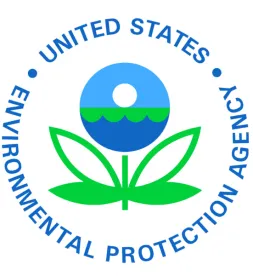On November 7, 2018, the United States Environmental Protection Agency (EPA) finalized action on its reconsideration of a 2009 action to clarify "project aggregation" for the major New Source Review (NSR) permitting program. EPA Final Action: Prevention of Significant Deterioration (PSD) and Nonattainment New Source Review (NNSR) Aggregation; Reconsideration, RIN2060‑AP80, November 7, 2018 (hereinafter, 2018 Action) (prepublication version attached). The action affirms the EPA's 2009 interpretation of when physical or operational changes should be combined into a single "project" for determination of major NSR applicability. Id. at 1. The November 7th action also lifts an administrative stay of the 2009 NSR interpretation and clarifies the implications for EPA-approved permitting programs. Id.
EPA's implementing regulation for NSR permitting establishes a two-step process for determining major NSR applicability for projects at stationary sources. Id. at 6. To be subject to major NSR permitting requirements, the project must result in both (1) a significant emissions increase from the project; and (2) a significant net emissions increase at the stationary source, taking into account emissions increases and decreases attributable to other projects undertaken at the stationary source within a specified timeframe. Id. This approach to permitting makes it important to accurately define what constitutes a "project," so that sources cannot conceivably carve up a higher-emitting project into two or more lower-emitting projects to avoid triggering major NSR permitting requirements. On January 15, 2009, EPA published its 2009 NSR Aggregation Action, which described the principles for project aggregation that the Agency would apply when determining whether a source had unreasonably segregated a single project into multiple projects, thereby circumventing NSR permitting requirements. Prevention of Significant Deterioration (PSD) and Nonattainment New Source Review (NNSR): Aggregation and Project Netting, 74 Fed. Reg. 2376 (Jan. 15, 2009) (hereinafter, 2009 Action). The 2009 Action was meant as a less prescriptive approach for determining project aggregation and announced EPA's interpretation of existing regulations and policy for applying that interpretation going forward. 2018 Action at 7. As a result of a petition by the Natural Resources Defense Council (NRDC) in January 2009, EPA announced a 90‑day administrative stay of the 2009 Action. See 74 Fed. Reg. 7284 (Feb. 13, 2009). On May 18, 2010, EPA invoked Administrative Procedure Act Section 705 to stay the action indefinitely pending proceedings for judicial review or the completion of consideration. 2018 Action at 14.
The 2018 Action adopts the 2009 Action and rejects a 2010 Reconsideration Proposal for the 2009 Action. Id. at 20. And, as noted above, the 2018 Action lifts the stay of the 2009 Action. Id. at 1. EPA determined that the 2009 Action articulates a reasonable standard for aggregating related projects that is consistent with the Clean Air Act (CAA) and Agency regulations. Id. at 21.
Without changing the definition of any terms in the rules, the 2018 Action interprets the rule text to mean that sources and permitting authorities should combine emissions only when nominally separate changes are "substantially related." Id. The "substantially related" criterion is based on interpretation of the term "project" contained in the major NSR regulations at 40 C.F.R. § 52.21(b)(52). Id. The 2018 Action describes factors that should be considered when evaluating whether changes are substantially related, including technical or economic dependence and offered examples of what it means to be substantially related. Id. at 13. The Agency noted that the test of substantial relationship centers around the interrelationship and interdependence of the activities, such that substantially related activities are "likely to be jointly planned (i.e., part of the same capital improvement project or engineering study), and occur close in time and at components that are functionally interconnected." Id. at 13; 74 Fed. Reg. at 2378. Further, the 2018 Action notes that EPA does not interpret separate activities that are consistent with the "overall basic purpose" of a plant to be a determinative factor in determining whether the activities have a substantial relationship with each other. Id. at 12.
The 2018 Action also establishes a rebuttable presumption that activities which occurred more than three years apart are not "substantially related," and therefore, generally, should not be aggregated for purposes of determining whether they are a single project for NSR permitting purposes. Id. at 10. EPA emphasized, however, that the timing between activities remains important from a standpoint of determining whether activities are substantially related, but are not determinative. Id. at 11.
The Agency noted in the 2018 Action that because the 2009 Action did not amend rule text, state and local air agencies with approved state implementation plans (SIPs) are not required to amend those plans to adopt this interpretation that their projects should be aggregated when "substantially related." Id. at 21. Further, if state and local agencies want to adopt this interpretation, EPA believes that in most cases this interpretation can be applied without formal adoption into their rules. Id.
The 2018 Action also discussed a separate Project Emissions Accounting Memorandum, issued on March 13, 2018. Id. at 28-29. As part of that memorandum, EPA expects to provide further guidance with respect to proper accounting for the scope of a project in which a source is seeking to take account of emission decreases in step 1 of the NSR applicability analysis. EPA noted that in a future rulemaking to clarify through regulatory text changes the interpretation set forth in the Project Emissions Accounting Memorandum, EPA will be taking comment on whether the "substantially related" criterion described in the 2018 Action may speak to the situation where a source itself is choosing to group together, as a single project, activities to which a projected emissions decrease is attributable. Id. at 29.




 />i
/>i
